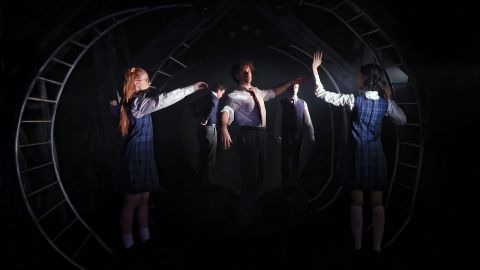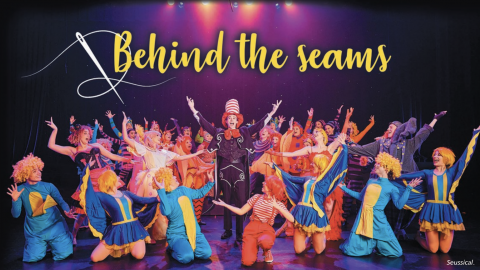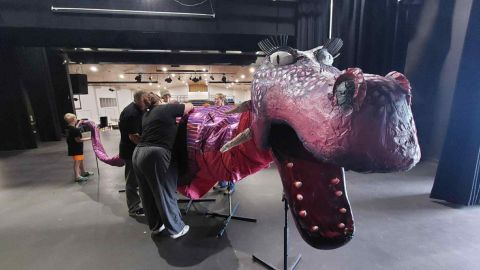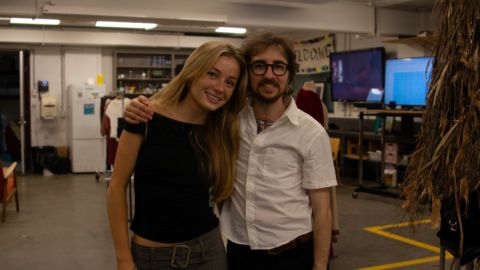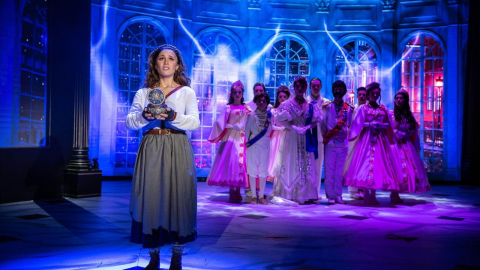Ghostly NIDA Costumes at Barracks
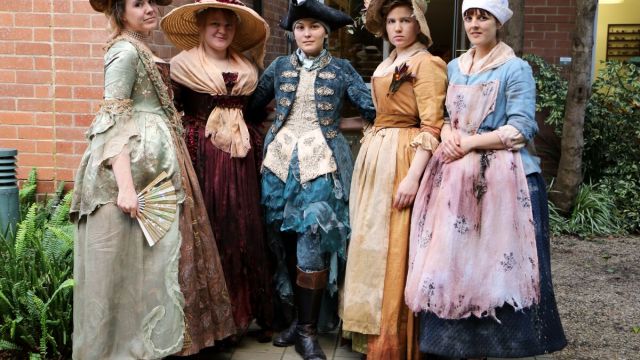
Strange things are happening at Hyde Park Barracks Museum in Sydney. The ghosts of a bygone audience have taken up their seats again, and the National Institute of Dramatic Art’s Bachelor of Fine Arts (Costume) students are helping to bring them back to life.
No, this won’t be some kind of military-inspired séance. Rather, Sydney Living Museums will be hosting a theatre-inspired installation entitled Whispers from the Past: The Recruiting Officer at the barracks from 16–28 August, for which NIDA students are creating costumes.
The installation itself will transport visitors back in time around 230 years to 1789, for an immersive representation of colonial Australia’s first known theatrical performance, The Recruiting Officer by Irish playwright George Farquhar, which was performed by convicts for the military and civilian elite as well as other convicts.
To represent the audience of the time, each of the five NIDA second-year students has designed and made a costume for a female audience member.
‘We were tasked with recreating the audience of the first known theatre production, The Recruiting Officer, which I believe happened a year or so after the first fleet of convicts arrived in Australia. On top of that, for the purpose of the exhibition, we were creating them as ghosts. This allowed us to theatricalise the pieces and make it more exciting and really historically accurate,’ commented BFA (Costume) student Lauren Ballinger.
Much like actors have to get into character when undertaking a role, our costume students also had to get into character in their own way for this project, because they were not only making the garments, they were designing them too.
‘We carried out research into the convicts who were on the first fleet that travelled to Australia, looking into their background and stories, and from that we built our own characters and designed costumes for them. We have a woman who was a nurse, a highway robber who cross-dressed as a man to evade capture, a servant girl who was wrongfully convicted, and there’s also a prostitute,’ commented BFA (Costume) student Sasha Wisniowski.
‘Creating characters for our costumes really helps in the process. Yes, we can research clothing from the period, but when you have a character it gives a life to the costume and provides direction for the design process.’
With no documented evidence of what types of clothing convicts were wearing at the time of the performance, the students looked to where they originated, which was England, Ireland and France.
‘We looked at what the lower classes were wearing around that time from those particular countries. There is a variance in what type of clothing people wore, dependant on their professional and social standing.
‘Because my character is a prostitute, she’s trying to attract attention, with colour especially. And of course everything at that time was handmade, so there are variations on the clothing. Clothing in bulk didn’t exist back then, nor did fashions across everything. Everyone had a slightly different look,’ said Ballinger.
Making the costumes for the installation involved a combination of different techniques and classes. For example the students learned corset-making for styles taken from the 1780s in particular, and, as the style of the time was to have myriad of items under the final layer’s surface, they layered and padded the undergarments to create the appropriate silhouettes. Patterns were draped over these shapes to develop the outer garments.
This isn’t an average 1700s audience, however, and each is made to look ghostly, reflecting elements of their life journey. This is achieved through the finishing techniques taught as part of the Costume students’ course work.
‘Finishing comes after we’ve made the costume and it looks good, but it looks like a costume. In order to make it look more realistic, we have to break it down. That was probably the most interesting and fun part, because it really changes a costume once it’s broken down – it gives it life and character,’ said Wisniowski.
Students were given control over the entirety of the project, from designing and making to finishing, enabling them to take full ownership of the final piece.
‘Because many of the projects we work on are plays, there’s already a designer’s vision there – which is really fun, I really like being given a picture and told to interpret that – but with this project, it’s been great to be given a concept and told to figure it out ourselves. NIDA especially is a really good training facility in which we’re able to do that,’ explained Ballinger.
Sasha added: ‘The most rewarding part about this project, aside from the learning, is that at the very end, when the garment is made, we can say: I did this, I did every part of it. I designed, made and broke it down. We’re able to really own the project. Every step has always been me. There’s a real pride we’re able to take from our work on the Hyde Park Barracks exhibition.’

